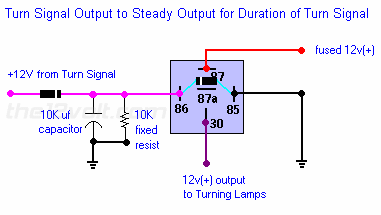Posted: November 20, 2012 at 6:27 AM / IP Logged
Posted: November 20, 2012 at 11:01 AM / IP Logged
Posted: December 11, 2012 at 7:18 AM / IP Logged
Posted: December 11, 2012 at 3:38 PM / IP Logged
Posted: December 15, 2012 at 11:03 PM / IP Logged
Posted: December 15, 2012 at 11:08 PM / IP Logged
Posted: December 16, 2012 at 1:33 AM / IP Logged
Posted: December 16, 2012 at 8:59 AM / IP Logged
Posted: December 16, 2012 at 5:42 PM / IP Logged
Posted: December 16, 2012 at 9:21 PM / IP Logged
Sorry, you can NOT post a reply.
This topic is closed.
 Printable version
Printable version


| You cannot post new topics in this forum You cannot reply to topics in this forum You cannot delete your posts in this forum You cannot edit your posts in this forum You cannot create polls in this forum You cannot vote in polls in this forum |

| Search the12volt.com |
Follow the12volt.com 
Monday, April 29, 2024 • Copyright © 1999-2024 the12volt.com, All Rights Reserved • Privacy Policy & Use of Cookies


Monday, April 29, 2024 • Copyright © 1999-2024 the12volt.com, All Rights Reserved • Privacy Policy & Use of Cookies
Disclaimer:
*All information on this site ( the12volt.com ) is provided "as is" without any warranty of any kind, either expressed or implied, including but not limited to fitness for a particular use. Any user assumes the entire risk as to the accuracy and use of this information. Please
verify all wire colors and diagrams before applying any information.






 Why is the resistor there? As I see it, it is in parallel with the relay coil and capacitor. When the capacitor discharges, current needs to go to the coil and to the resistor at the same time, requiring a bigger capacitor for the same time delay. Also, the resistor adds non-necessary load and heat to the system.
I'd like to know if it's safe to remove the resistor, the capacitor value should be chosen according to the delay needed and the coil resistance.
Otherwise, this is a simple and useful solution.
Why is the resistor there? As I see it, it is in parallel with the relay coil and capacitor. When the capacitor discharges, current needs to go to the coil and to the resistor at the same time, requiring a bigger capacitor for the same time delay. Also, the resistor adds non-necessary load and heat to the system.
I'd like to know if it's safe to remove the resistor, the capacitor value should be chosen according to the delay needed and the coil resistance.
Otherwise, this is a simple and useful solution.

